Top 19 Yoga Poses for Back Pain Relief
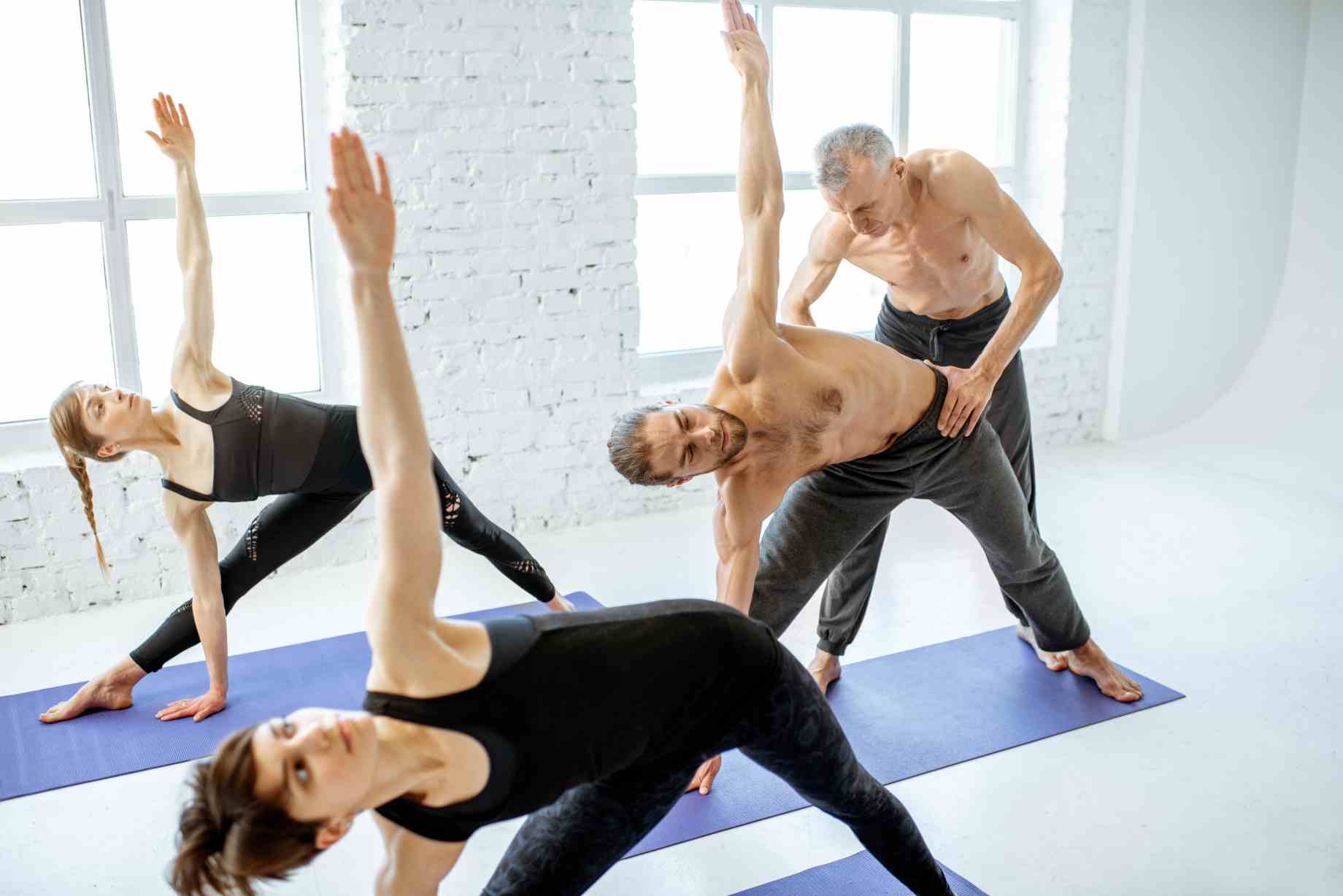
Yoga is one of the best forms of exercise for staying relaxed and stimulating body functions. Nevertheless, daily yoga alleviates back pain and is an effective preventive therapy.
Certain yoga poses stimulate blood circulation in the lower back joints and strengthen these regions, relieving back pain.
Read the full article to learn the best yoga poses for back pain relief!

Table of Contents

-
-
-
Marjaryasana
-
Adho Mukha Svanasana
-
Trikonasana
-
Salamba Bhujangasana
-
Bhujangasana
-
Salabhasana
-
Setu Bandha Sarvangasana
-
Ardha Matsyendrasana
-
Supta Matsyendrasana
-
Balasana
-
Kapotasana
-
Urdhva Uttanasana
-
Uttanasana
-
Malasana
-
Apanasana
-
Uttana Shishosana
-
Ardha Pincha Mayurasana
-
Ardha Mandalasana
-
Ardha Bhekasana
-
-
-
-
-
-
How Effective is Yoga for Back Pain?
If you suffer from back pain, these yoga asanas can benefit you. Yoga can be an effective remedy as it helps the muscles that support the spine and back of your body. Yoga strengthens the paraspinal muscles that bend the spine, the multifidus muscles that stabilise the vertebrae, and the transverse abdominis in the abdominal region.
However, one should keep in mind that these yoga asanas for back pain should not be used as an alternative to medication.
Best Yoga Poses for Back Pain
Some of the best poses of yoga for back pain relief are:
1. Marjaryasana or Cat-Cow Pose
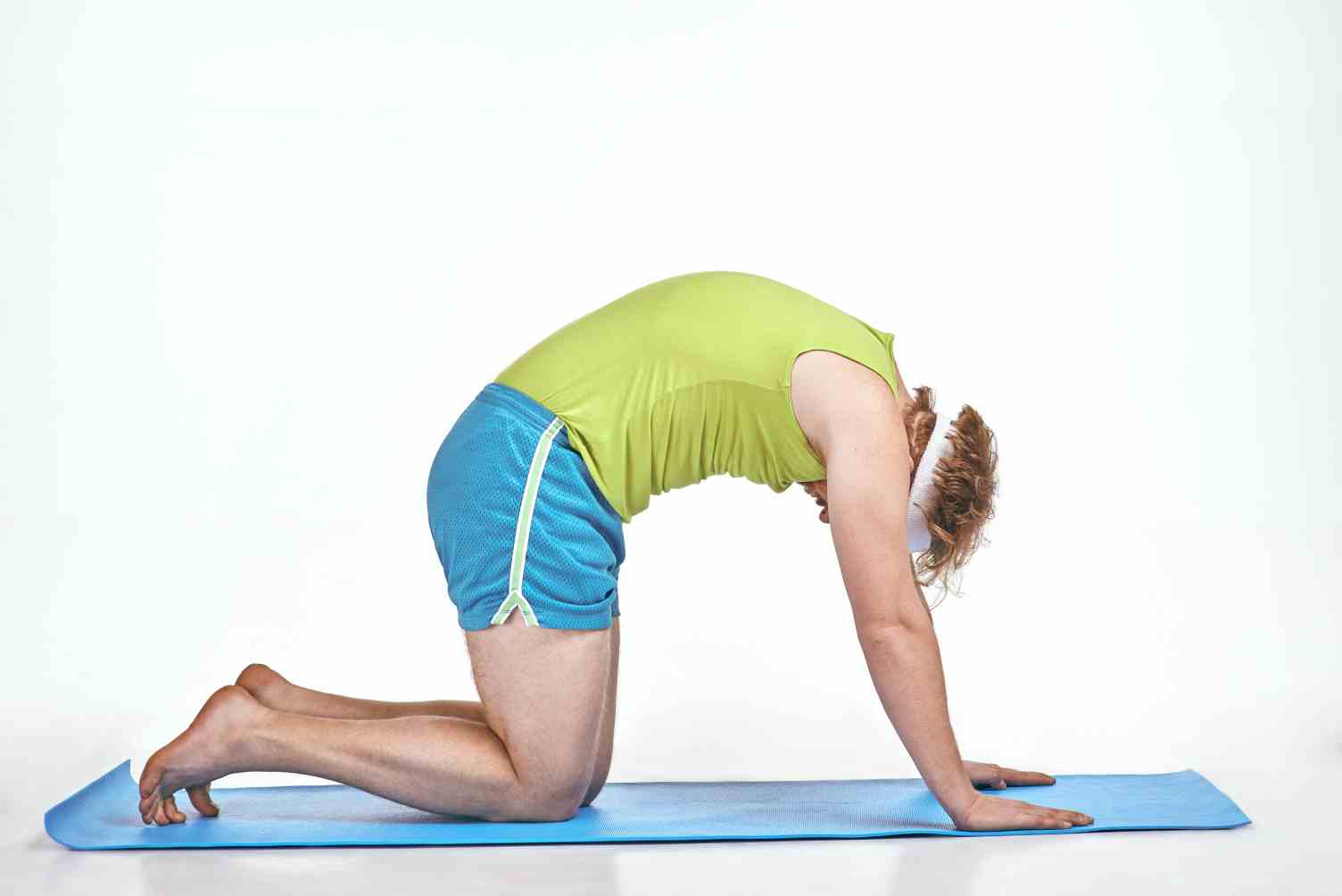
Marjaryasana, or cat-cow pose, is a gentle backbend that mobilises and stretches the spine. This asana also stretches the back and shoulder muscles.
To do Marjaryasana, start on all fours with your wrists under your shoulders and knees under your hips. Inhale, arch your back, lifting your head and tailbone (cow pose). Exhale, round your spine, tucking your chin (cat pose), repeating for a gentle spinal stretch.
2. Adho Mukha Svanasana or Downward Facing Dog Pose

Ado Mukha Shvanasana, or downward-facing dog pose, strengthens the deep abdominal muscles, which are key to good lower back posture. This pose also relieves back pain and sciatica.
To perform Adho Mukha Svanasana, or downward facing dog pose, start on your hands and knees, then lift your hips up and back, forming an inverted V shape with your body. Press your palms and heels towards the ground while lengthening your spine. Keep your head between your arms, and hold the pose while breathing deeply for a full-body stretch and strengthening.
3. Trikonasana or Extended Triangle
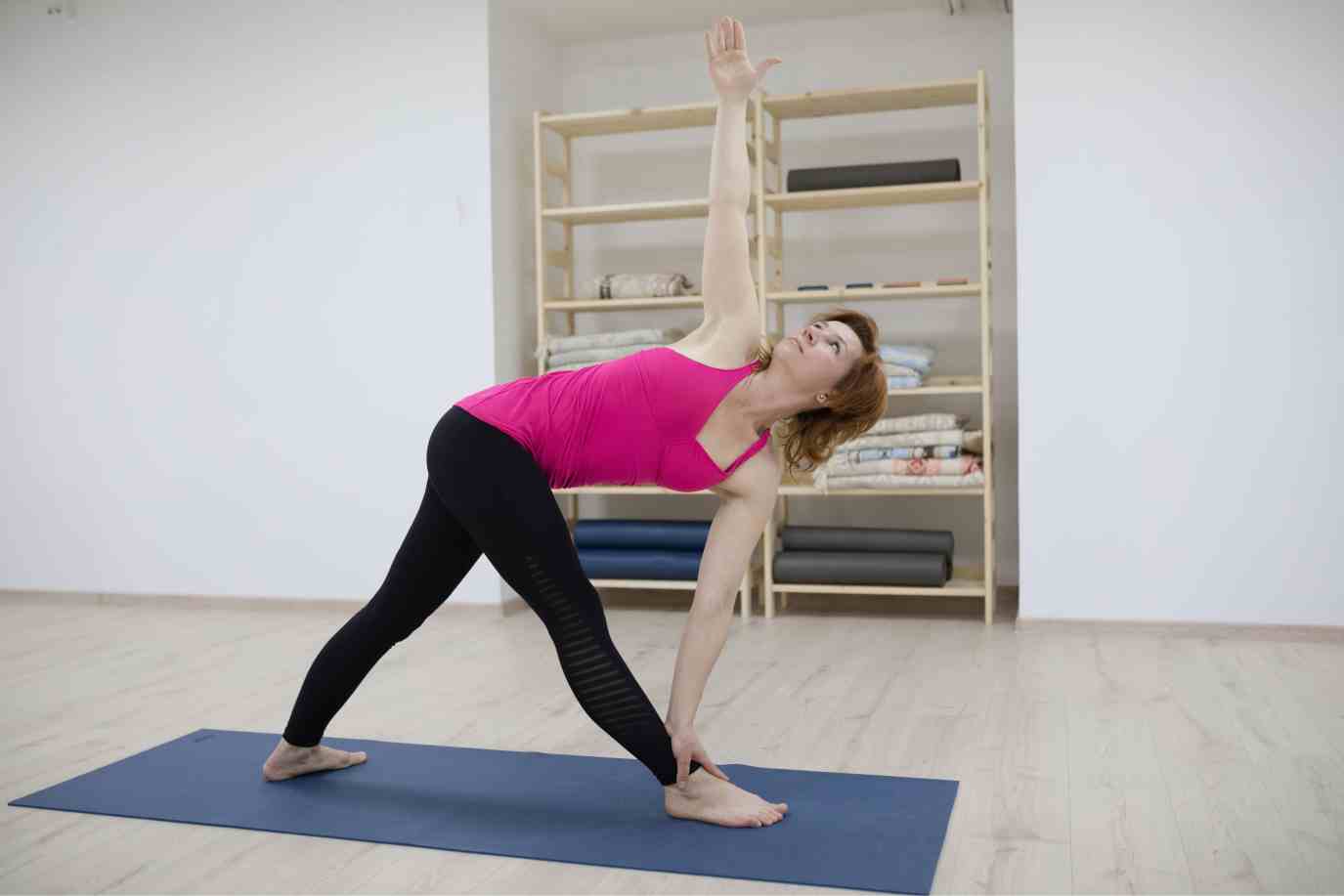
Trikonasana, or extended triangle, is a classic standing posture that relieves sciatica, backache and neck pain. Furthermore, it helps stretch the spine, groin, and hips.
Stand your feet wide apart to practice the Trikonasana, or extended triangle pose. Turn right foot out, arms parallel. Reach the right hand to the right foot, extending the left arm to create a triangle shape. Then, switch sides for a deep stretch in the legs, spine, and sides of the body.
4. Salamba Bhujangasana or Sphinx Pose
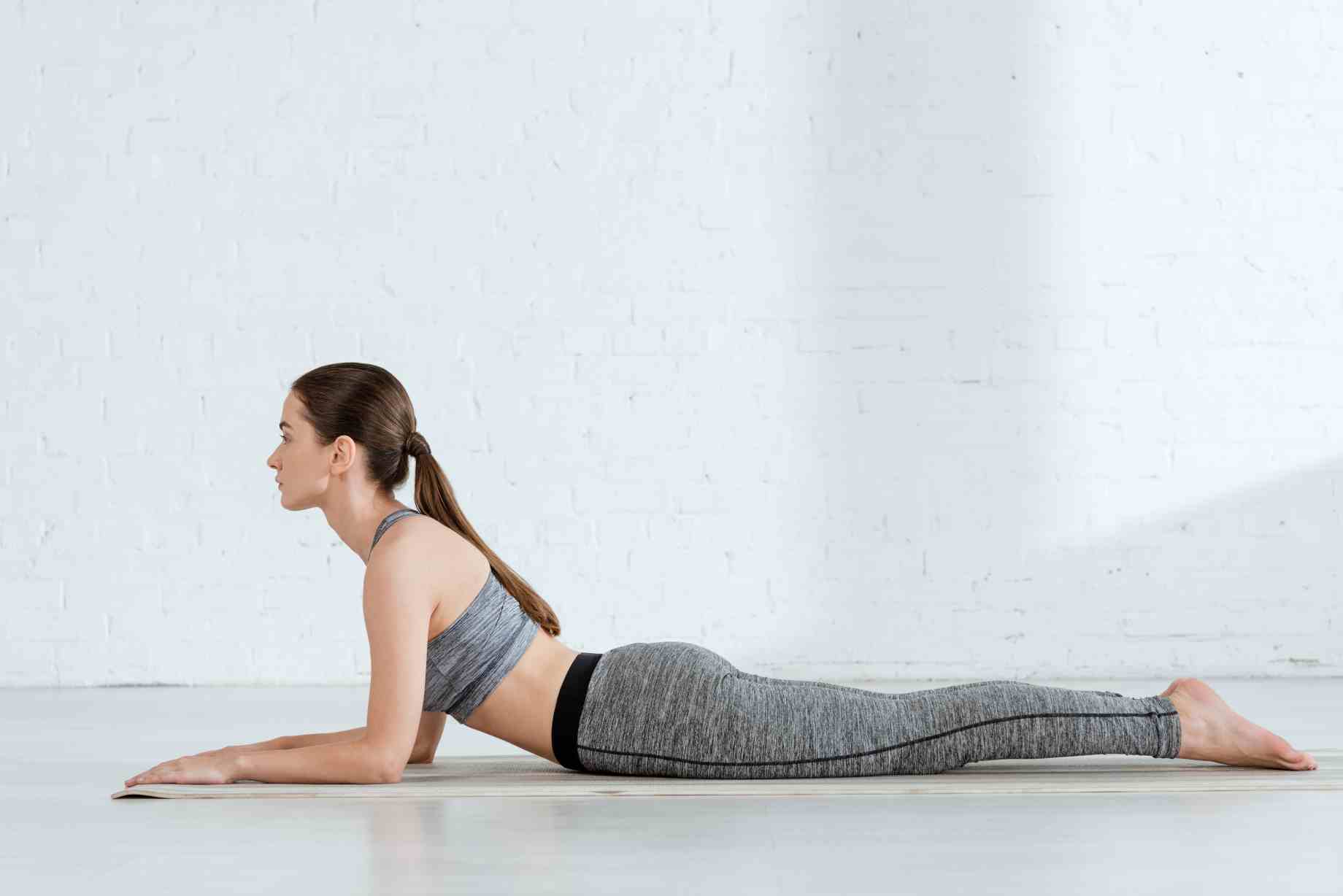
Salamba Bhujangasana, or sphinx pose, stimulates the sacral-lumbar area and helps to tone down the spine. This pose allows the human body to attain the proper lower back curvature.
To perform Salamba Bhujangasana or sphinx pose, lie on your stomach, legs extended and feet hip-width apart. Put elbows under shoulders, forearms parallel. Press forearms and palms into the floor, lift chest and head while keeping pubic bone grounded. Hold, elongating spine and opening chest for a gentle backbend and abdominal stretch.
5. Bhujangasana or Cobra Pose
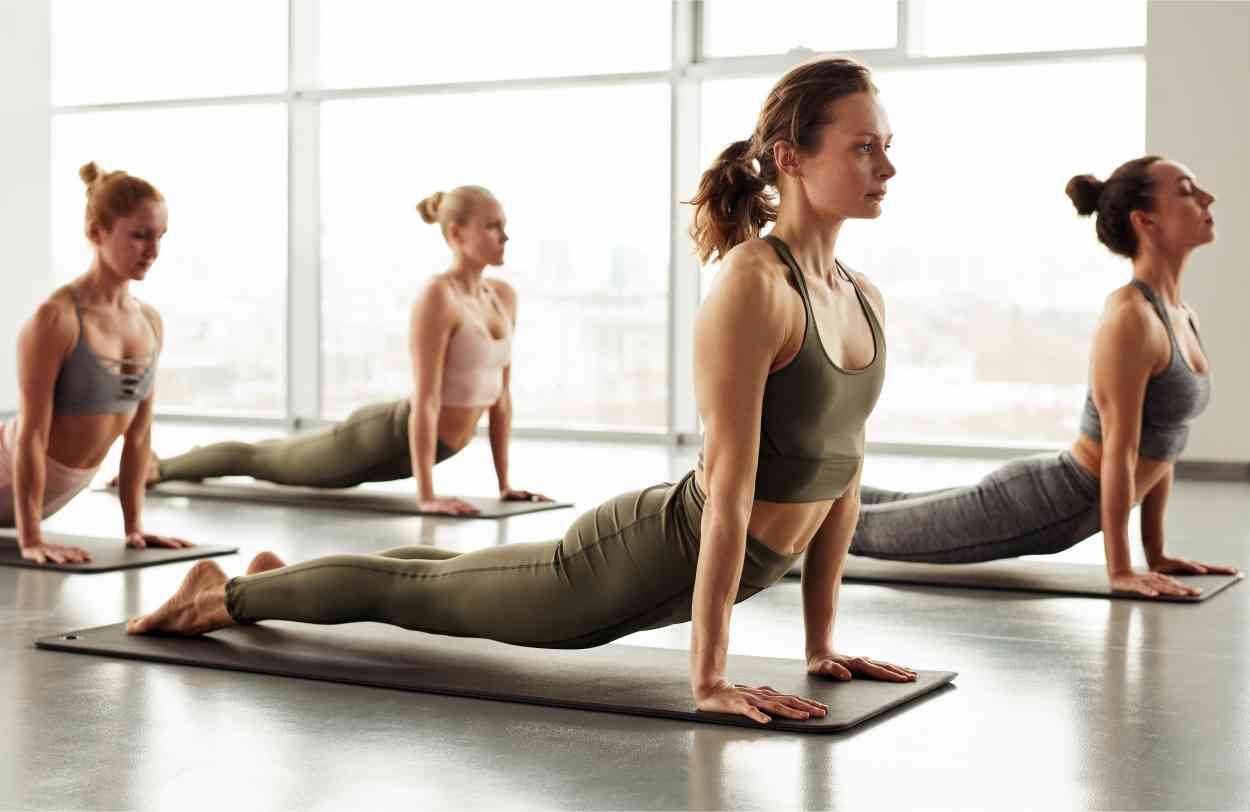
Bhujangasana or cobra pose is an effective yoga pose for back pain. It stretches the human abdomen, shoulders and chest. This pose soothes sciatica and strengthens the spine.
To do the cobra pose, lie on your stomach with your legs extended and feet together. Place palms beside the chest, elbows close. Inhale, press into palms, and lift the chest off the mat with slightly bent elbows. Lengthen neck, gaze forward, and engage back muscles. Hold, then exhale to release, lowering the chest. This strengthens the spine and opens the chest and shoulders.
6. Salabhasana or Locust Pose
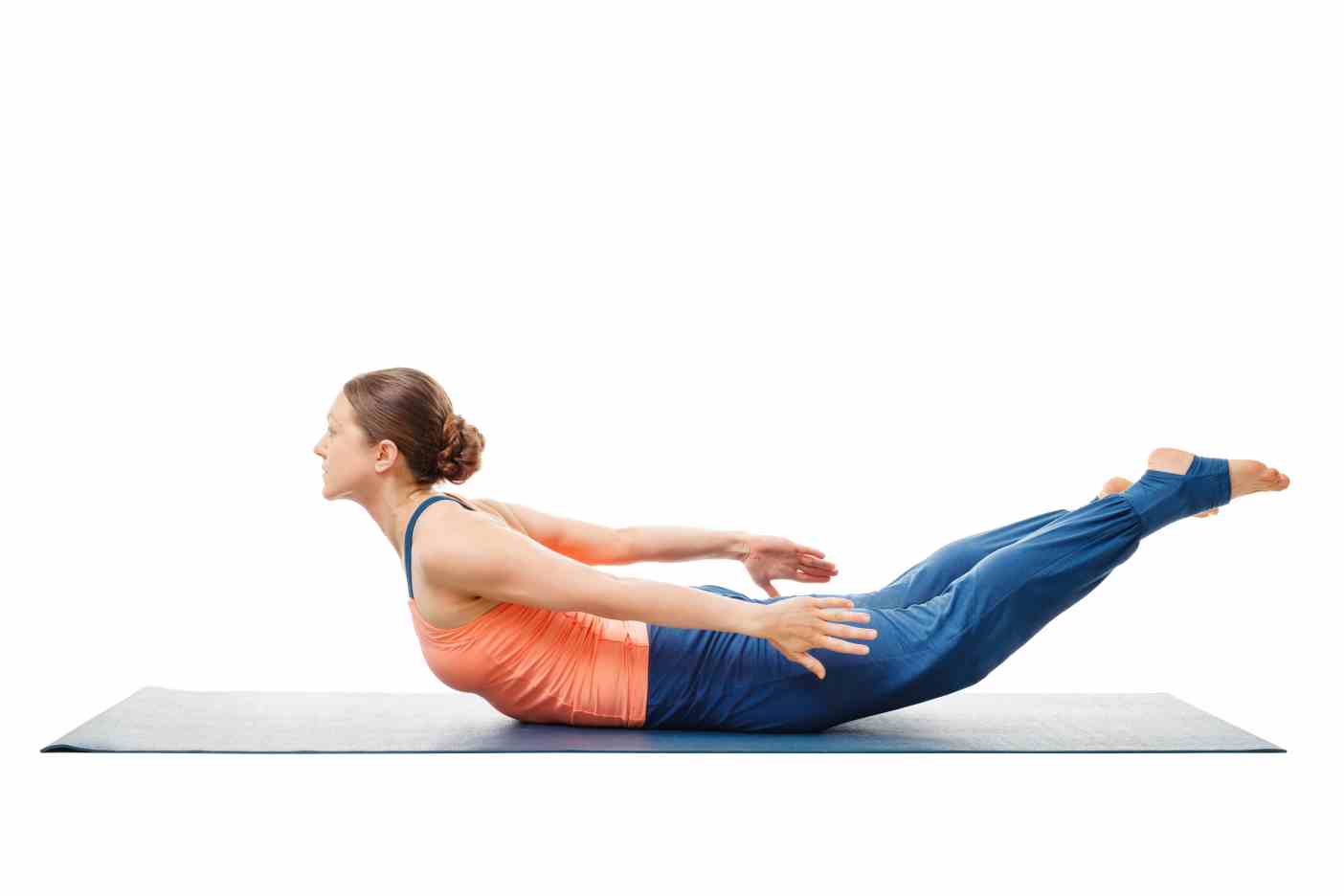
Salabhasana, or locust pose, is a gentle backbend that strengthens the torso, back, legs, and arms. It helps relieve fatigue and lower back pain.
To do Salabhasana, lie on your stomach, arms beside you, forehead on the mat. Inhale, lift chest, arms, and legs off the mat. Keep your gaze forward, and engage your core and buttocks. Hold briefly, then exhale and lower down. Strengthens back muscles and improves posture.
7. Setu Bandha Sarvangasana or Bridge Pose
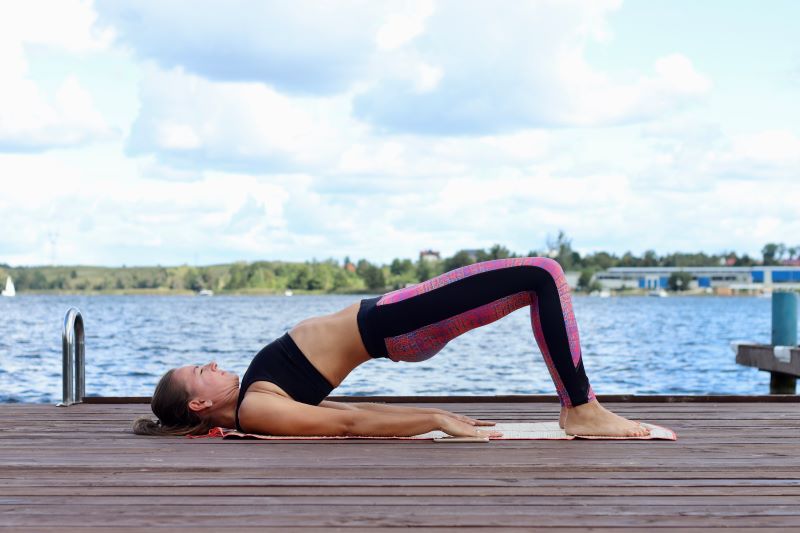
Setu Bandha Sarvangasana, or bridge pose, ignites and strengthens the core abdomen, essential for controlling pelvic tilt. This pose involves stretching the spine and relieves back pain and headaches.
To perform Setu Bandha Sarvangasana, lie on your back with your knees bent and feet hip-width apart. Inhale, lift your hips towards the ceiling, interlace your fingers under the back, and press your arms into the mat. Hold, feeling a stretch in your chest, neck, and thighs, then exhale to release.
8. Ardha Matsyendrasana or Half Lord of the Fishes
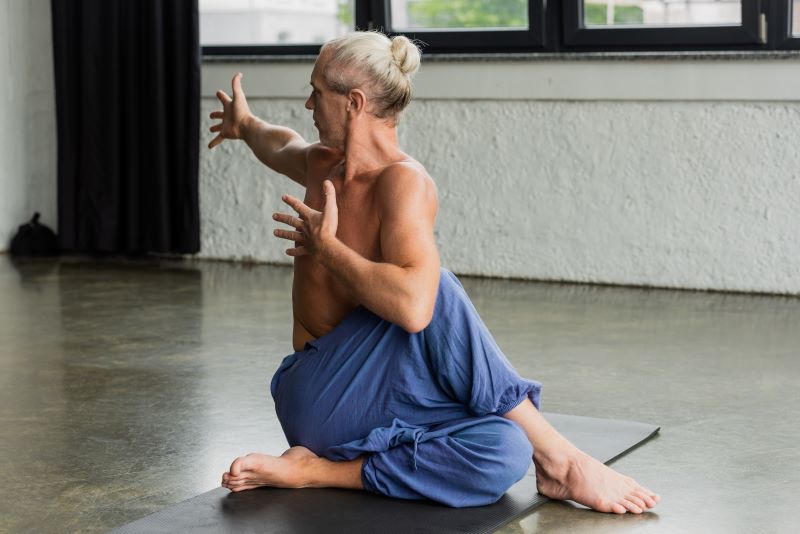
Ardha Matseyendrasana, half-lord of the fishes pose, helps energise the spine and relieve backache.
To practice Ardha Matsyendrasana, sit with your legs extended, bend your right knee, placing foot outside your left thigh. Inhale, lift left arm, exhale, twist torso to the right, hooking right elbow outside left knee. Hold, lengthening spine with each inhale, deepening twist with exhales. Repeat on the opposite side for a spinal twist that aids digestion and stretches the spine.
9. Supta Matsyendrasana or Two-Knee Spinal Twist Pose
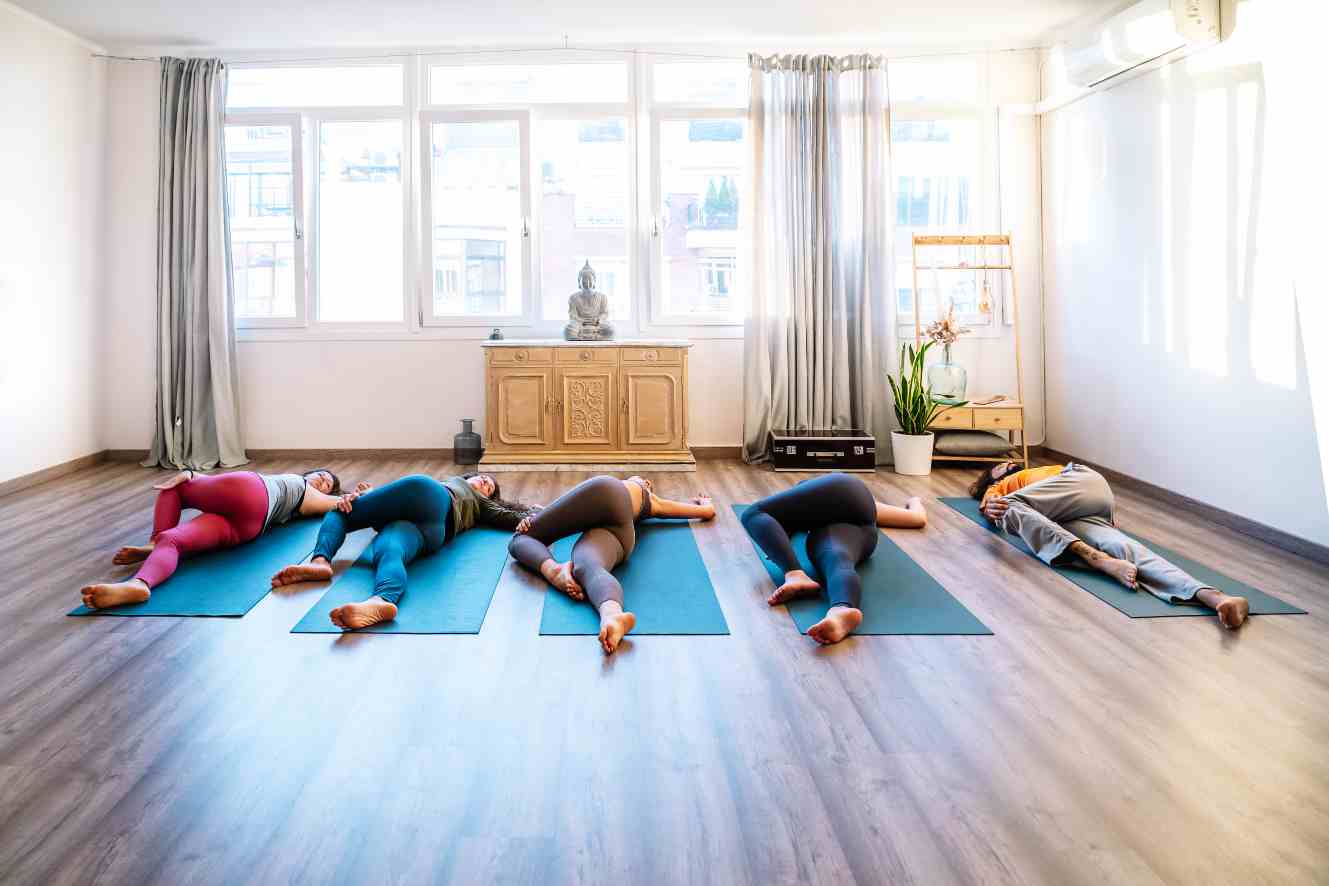
Supta Matsyendrasana, or two-knee spinal twist pose, restores the mobility and movement of the spine and back. It involves stretching the back, shoulders, and spine. Doing this pose relieves stiffness and pain in your hips and back.
To perform Supta Matsyendrasana, lie on your back, bend both knees and keep your feet flat on the floor. Exhale and drop your knees to one side, keeping your shoulders grounded. Extend your arms to the sides and gaze in the opposite direction for a gentle spinal twist. Hold, then switch sides, releasing tension in the spine and promoting relaxation.
10. Balasana or Child’s Pose
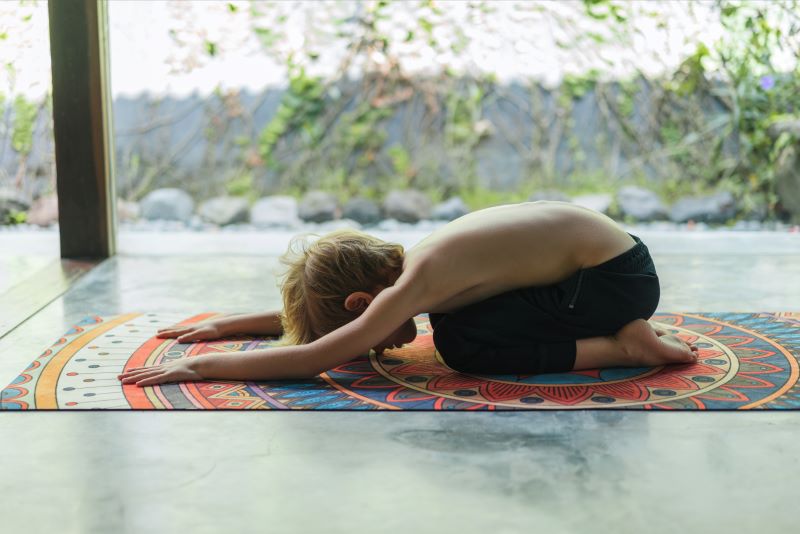
Balasana, or child's pose, helps to take the lower back pressure. It involves stretching the spine and decompressing it.
To do Balasana, kneel on the floor, big toes together, knees apart. Exhale, lower torso between thighs, forehead to the mat, arms extended or resting alongside the body. Breathe deeply, relaxing your neck and shoulders, elongating your spine for a soothing stretch.
11. Kapotasana or Pigeon Pose
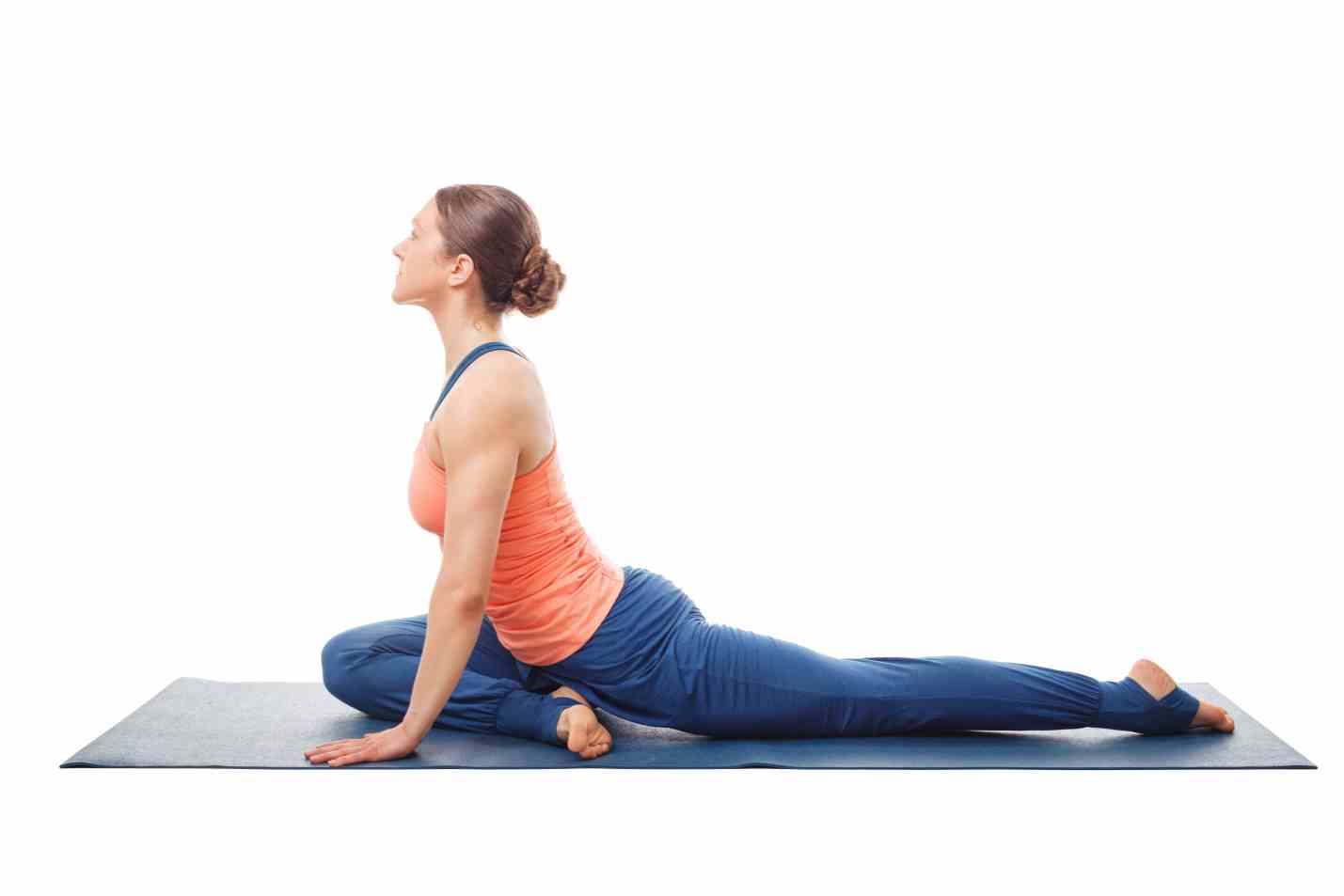
Kapotasana, or pigeon pose, involves opening the hip joint, which brings flexibility and mobility to the joint. Furthermore, this asana stretches your lower back and hip flexors. Pigeon pose can help relieve hip pain and mild pain in the lower back.
To practice Kapotasana, start in a tabletop position, slide your right knee toward your right wrist, extending left leg behind you. Lower hips toward the floor, keeping the spine long. Hold, feeling a deep stretch in the hips and thighs. Repeat on the other side, promoting hip flexibility and release.
12. Urdhva Uttanasana or Upward Forward Bend
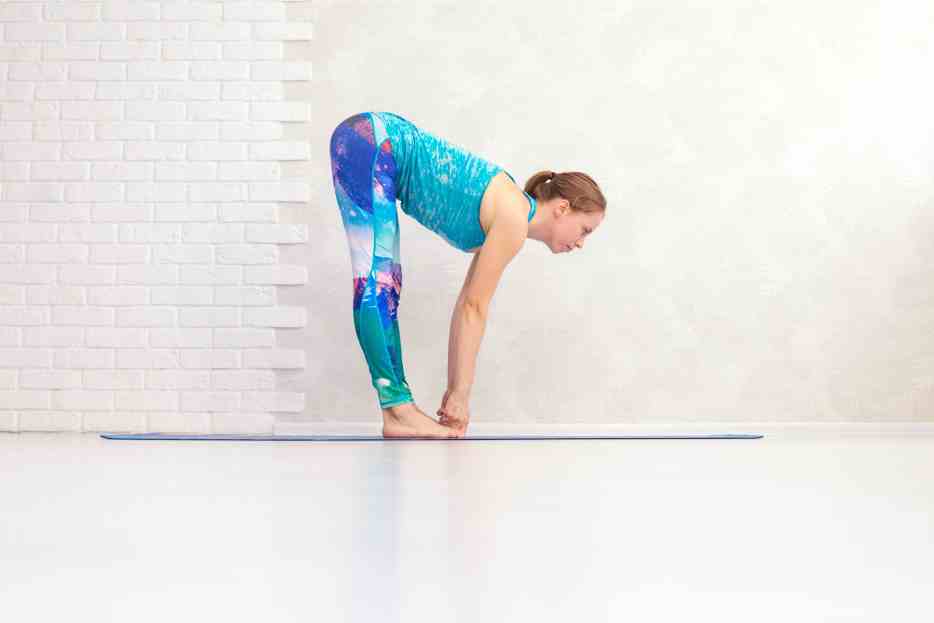
Urdhva Uttanasana, or upward forward bend pose, relieves back pain by stretching the hamstrings and muscles in your back.
To do Urdhva Uttanasana, stand tall with your feet hip-width apart. Inhale, reach arms overhead, lengthening spine. Exhale, hinge at hips, folding forward with a straight back. Hold, feeling a stretch in the hamstrings and spine. Inhale and rise back up, promoting flexibility and length in the spine and hamstrings.
13. Uttanasana or Standing Forward Bend
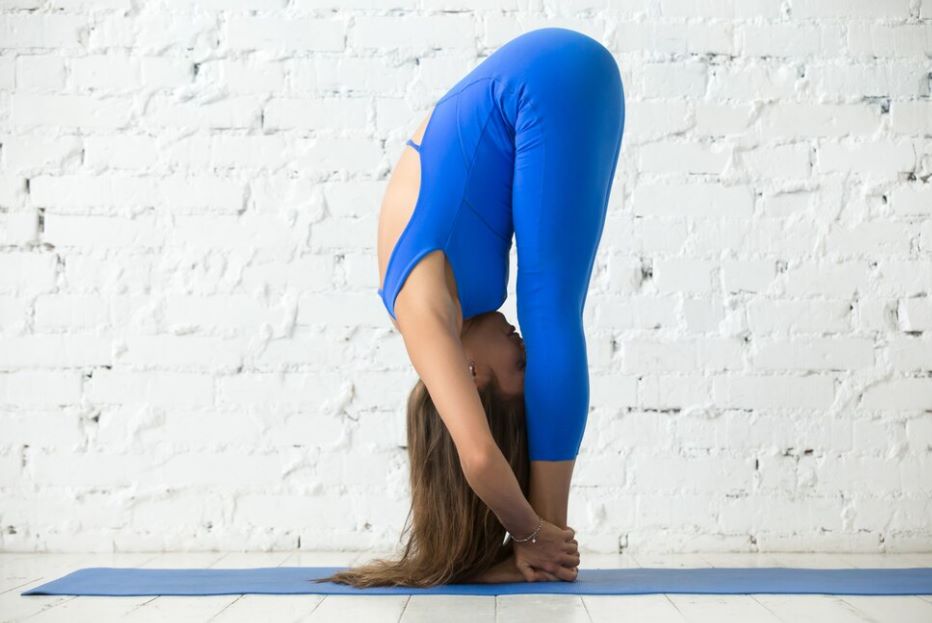
Uttasana, or standing forward bend pose, is a basic asana that stretches your calves, hips, and hamstrings. It also strengthens your quadriceps and relieves back pain.
To practice Uttanasana, stand with feet hip-width apart—Exhale, hinge at hips, and fold forward from the waist. Let arms hang or grasp elbows. Hold, relaxing neck and shoulders and lengthening spine. Breathe deeply, feeling a stretch in the hamstrings and back, promoting relaxation and flexibility.
14. Malasana or Garland Pose
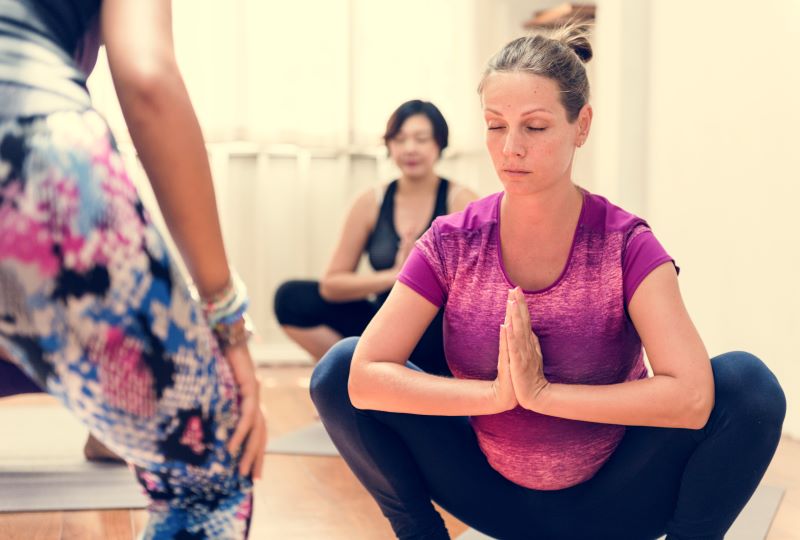
Malasana or garland pose stretches every part of your lower back, including the quadriceps, hips, torso and groin. It rejuvenates the blood circulation in these regions and relieves back pain.
To perform Malasana, stand with feet wider than hip-width apart, and toes angled outward. Squat down, lowering hips toward heels, keeping heels on the ground. Bring palms together at the heart center, pressing elbows against inner thighs. Hold, feeling a deep stretch in hips and groin. Breathe deeply, promoting flexibility and strength in the lower body.
15. Apanasana or Wind-Relieving Pose
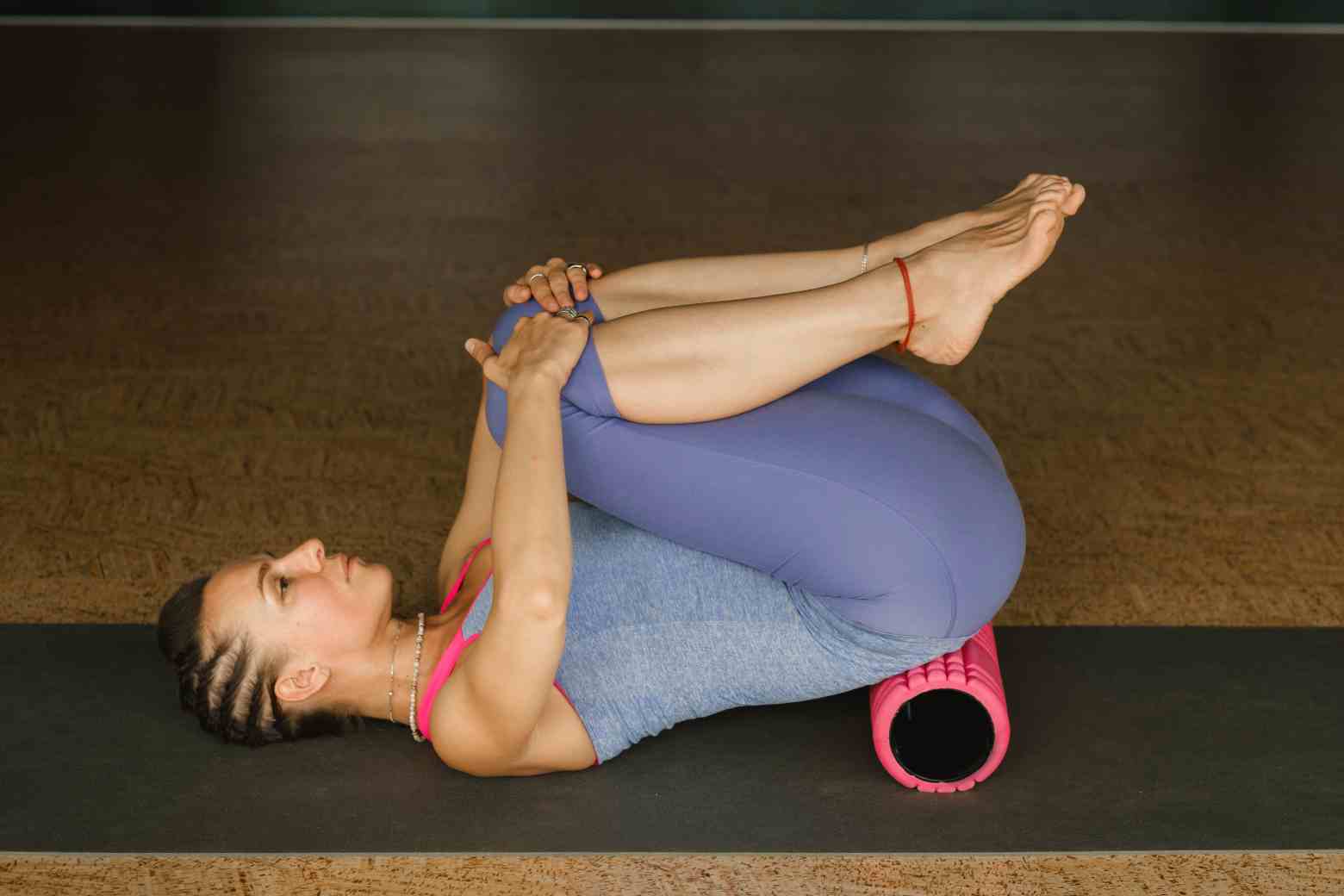
Apanasana, or wind-relieving pose, involves the stretching of the lower back. This reduces lower back pain.
To do Apanasana, lie on your back, knees bent towards your chest. Exhale, hug your knees in, clasping hands over your shins. Inhale deeply, expanding your belly. Exhale, gently press your thighs towards your abdomen. Hold, feeling a gentle stretch in your lower back and hips. Breathe deeply, releasing tension and promoting relaxation in the body.
16. Uttana Shishosana or Extended Puppy Pose

A variation of the child's pose, the extended puppy pose elongates the spine and shoulders. It offers a deep stretch while maintaining openness in the hips, relieving tension in the back muscles, and promoting relaxation and release, making it beneficial for alleviating back pain.
Start in a tabletop position. Walk your hands forward, lowering your chest towards the mat while keeping your hips high. Rest your forehead on the floor with your arms extended. Hold, feeling a stretch in the spine and shoulders.
17. Ardha Pincha Mayurasana or Dolphin Pose
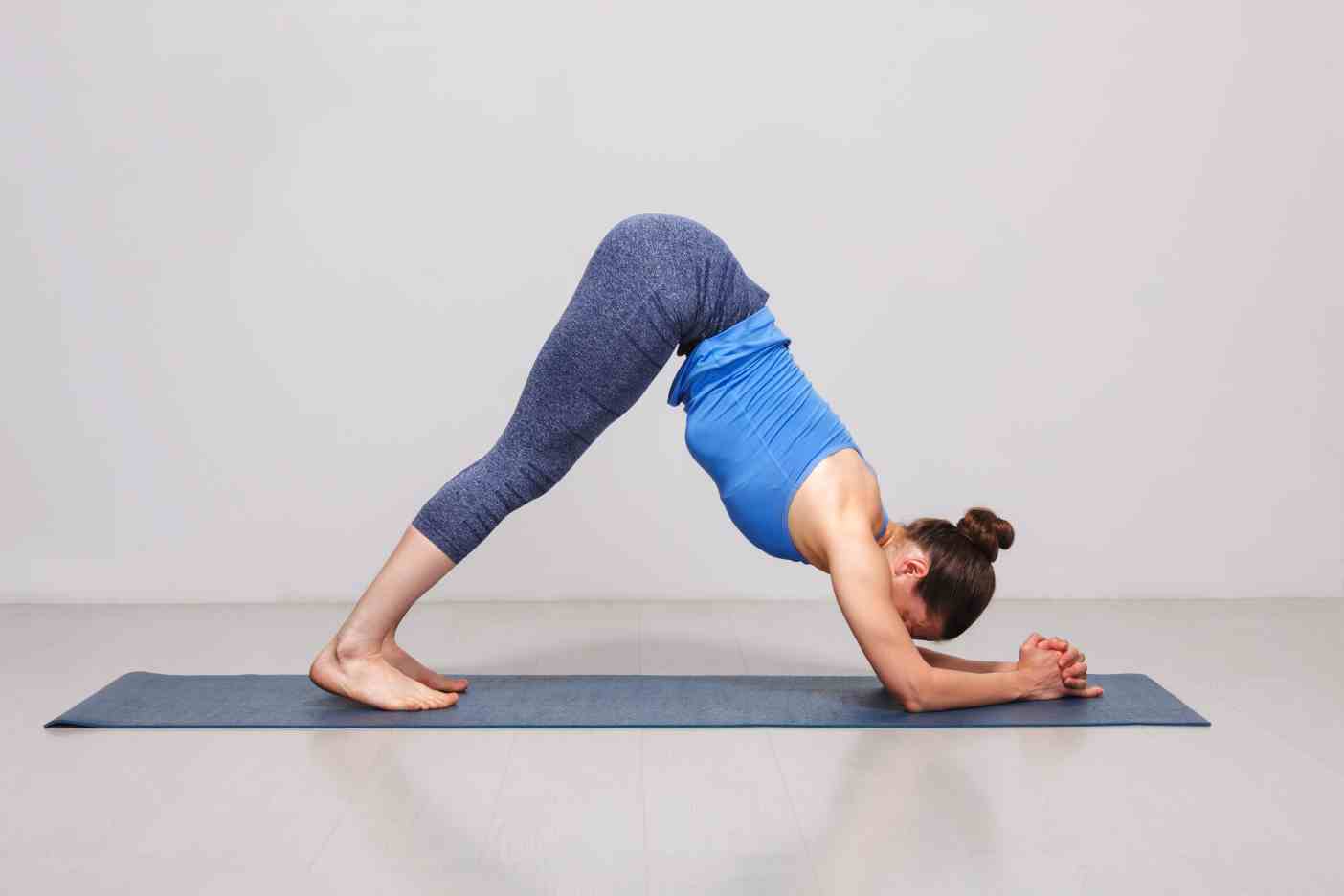
The dolphin pose strengthens the arms and shoulders, stretching the hamstrings and calves and improving upper body strength and flexibility. It can also help reduce back pain by improving overall posture and supporting the spine.
Begin in a downward-facing dog. Lower onto your forearms, forming a forearm plank. Lift your hips towards the ceiling and your heels towards the floor. Hold, engaging your core and shoulders and stretching your hamstrings and calves.
18. Ardha Mandalasana or Half Circle Pose
Half circle pose is a dynamic variation of the traditional plank pose, engaging the core muscles and improving stability and balance through circular movements, contributing to reducing back pain and discomfort.
To perform Ardha Mandalasana, stand with feet hip-width apart and arms relaxed. Inhale and raise one arm overhead, bending to the opposite side. Keep hips squared and gaze up. Hold briefly, then exhale back to the center.
19. Ardha Bhekasana or Half Frog pose
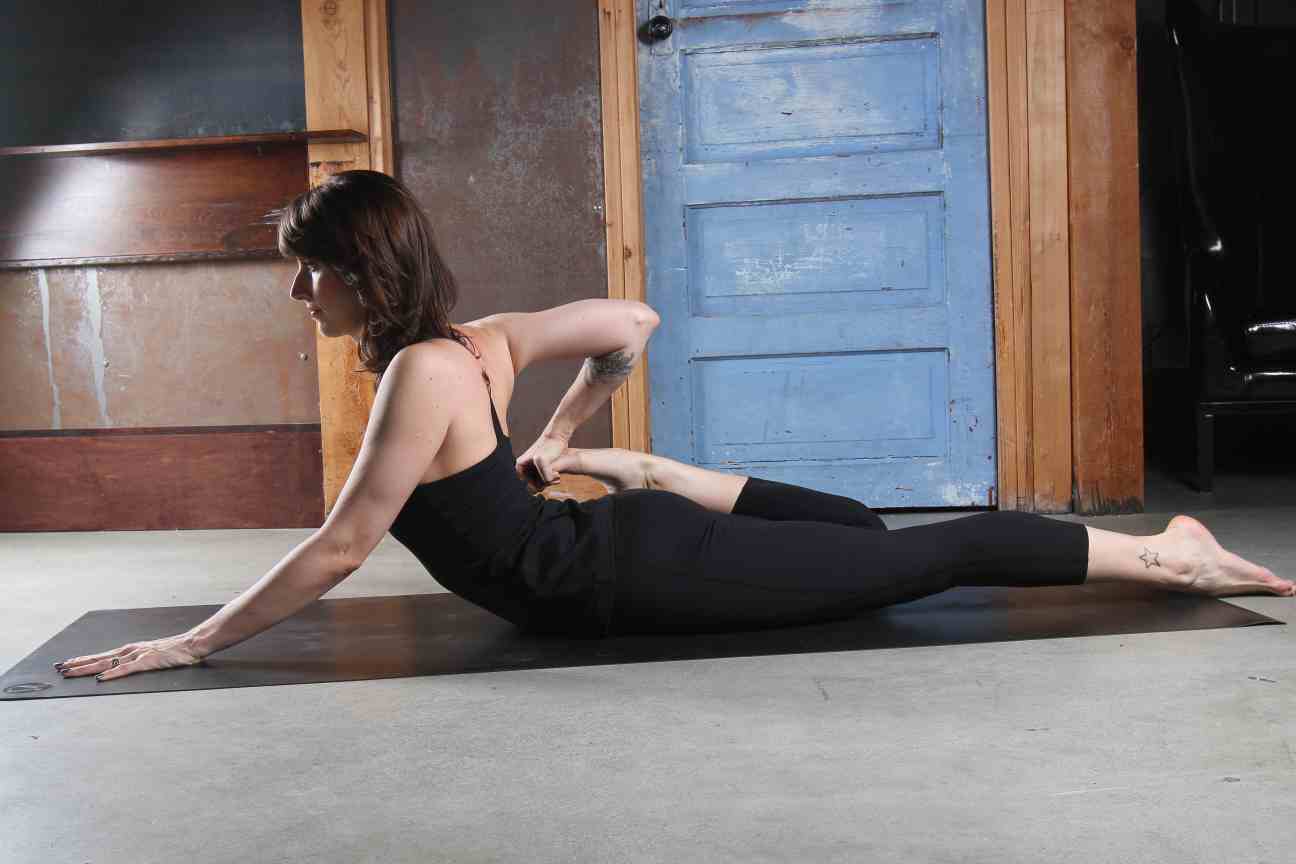
In a frog pose, one knee is bent and brought towards the torso, targeting the quadriceps and hip flexors. This position promotes flexibility and release in the front of the thigh and hip, which can alleviate strain on the lower back and contribute to relieving back pain.
Lie on your stomach. Bend one knee, bringing your heel towards your buttocks. Hold your ankle with your hand on the same side, pressing your hips towards the floor. Hold, feeling a deep stretch in your quadriceps and hip flexors. Repeat on the other side.
Effective Tips While Performing Yoga Asanas for Back Pain
Yoga can be an excellent tool for alleviating back pain, but it's important to approach it with mindfulness and awareness of your body's limitations. Here are some effective tips for practising yoga asanas (poses) for back pain relief:
- Start Slowly and Gently: Begin with gentle poses and gradually progress to more challenging ones as your strength and flexibility improve. Listen to your body and avoid pushing yourself too hard, especially if you feel pain or discomfort.
- Focus on Proper Alignment: Pay close attention to your alignment in each pose, especially in poses that target the back. Proper alignment helps prevent strain and injury and benefits you from the pose.
- Engage Your Core Muscles: Strengthening the core muscles can help support the spine and alleviate back pain. Engage your core muscles throughout yoga, especially in poses requiring stability and balance.
- Modify as Needed: Be bold and modify poses to suit your needs and limitations. Use props such as blocks, straps, or bolsters to make poses more accessible and comfortable.
- Focus on Forward Bends and Gentle Twists: Forward bends and gentle twists can help release tension in the back muscles and improve flexibility. Practice poses like Uttanasana (standing forward bend) and Bharadvajasana (Bharadvaja's Twist) to gently stretch and strengthen the muscles along the spine.
- Breathe Deeply and Mindfully: Pay attention to your breath throughout your yoga practice. Deep, diaphragmatic breathing can help relax the body, reduce stress, and promote a sense of ease, which can be particularly helpful for relieving back pain.
- Be Patient and Consistent: Healing takes time, so be patient with yourself and your body as you work to relieve back pain through yoga. Consistency is key, so practice regularly and incorporate yoga into your daily routine for long-term relief.
Diet Tips to Combine with Yoga for Back Pain
Combining yoga with a healthy diet can further support your efforts to manage and alleviate back pain. Here are some diet tips to complement your yoga practice:
- Anti-Inflammatory Foods: Incorporate foods that have anti-inflammatory properties into your diet. Chronic inflammation can contribute to back pain, so including fatty fish (salmon, mackerel), leafy greens, berries, nuts, seeds, turmeric, and ginger can help reduce inflammation and alleviate pain.
- Hydration: Drink plenty of water throughout the day to stay hydrated. Water helps keep your spinal discs hydrated and pliable, reducing the risk of back pain and improving overall spinal health.
- Balanced Diet: Aim for a balanced diet that includes a variety of nutrient-rich foods. Focus on consuming plenty of fruits, vegetables, whole grains, lean proteins, and healthy fats to provide your body with the vitamins, minerals, and nutrients it needs to support overall health and well-being.
- Maintain a Healthy Weight: Excess weight can strain your back and exacerbate back pain. If you're overweight or obese, adopting a healthy, balanced diet and engaging in regular physical activity, such as yoga, can help you achieve and maintain a healthy weight, reducing back pain.
- Omega-3 Fatty Acids: Omega-3 fatty acids, found in fatty fish, flaxseeds, chia seeds, walnuts, and hemp seeds, have been shown to have anti-inflammatory properties and may help reduce back pain.
- Magnesium-Rich Foods: Magnesium plays a role in muscle relaxation and nerve function, so including magnesium-rich foods in your diet may help alleviate muscle tension and reduce back pain. Good sources of magnesium include leafy greens, nuts, seeds, legumes, whole grains, and dark chocolate.
- Avoid Caffeine and Alcohol: Caffeine and alcohol can interfere with sleep quality and exacerbate inflammation in the body, which can contribute to back pain. Limit your consumption of caffeine and alcohol, especially in the hours leading up to bedtime, to promote better sleep and reduce inflammation.
Who Should Do Yoga for Back Pain?
Yoga for back pain is beneficial for individuals seeking natural, holistic approaches to alleviate discomfort and enhance spinal health. It suits those with mild to moderate back pain, including muscle tension, stiffness, and minor injuries.
Additionally, people looking to improve flexibility, strength, and posture can benefit from incorporating yoga into their routine. However, individuals with severe or chronic back conditions should consult a healthcare professional before starting a yoga practice.
Who Should Avoid Yoga for Back Pain?
Women should avoid practising yoga during their menses. Individuals should not do yoga if they are in a state of stress or anxiety. Furthermore, people with low muscle strength should be extra careful while doing yoga. Those who have osteoporosis should avoid practising certain poses.
Disclaimer: To ensure maximum safety and get the best results, consult your doctor before practising yoga. Further, doing yoga under the guidance of a teacher or trainer minimises the risk of possible injuries.
Yoga is an effective way to relieve back pain. However, certain yoga asanas for back pain relief should be performed under the guidance of a professional trainer.
Mindful practice, focusing on alignment and listening to the body, is crucial to prevent exacerbating pain. While it may not completely reverse chronic or severe back issues, yoga can significantly alleviate discomfort and improve overall spinal health.














